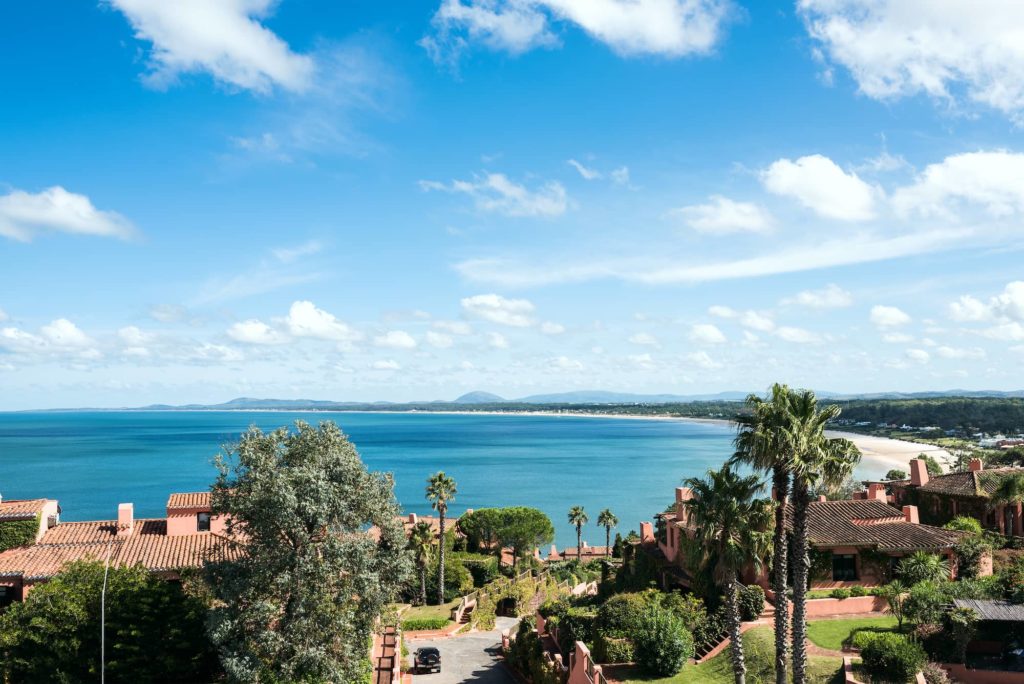Intelligent Farming in Uruguay
Photo credit: © Mniebuhr | Dreamstime.com – Field work – Modern row crop Farming
If you are thinking of becoming a farmer in Uruguay you will not sweat.
It’s a sun-soaked January afternoon in Dolores Soriano, and Luis Mordiquio a 1200 hectare producer is in his crop sprayer down a dirt road towards his field, once he enters the vast crop downhill, he presses a button on top of the joystick-like accelerator to his left and arms fling out from the rear of the tractor unfolding to create an 18-meter boom. He grasps the stick and, as he pushes it forwards, the eight-ton machine starts to move between the soy stalks.
Under the shade Luis controls his progress on a screen but together with a huge amount of data which then allows him to obtain a map of yield per square meter field, which will lead in the next harvest to maximize the return on every arable corner.
Luis , 41 began working in the field of his family in 1999 so he learned the traditional methods but then went through all the new planting technology revolution with new equipment, ways of addressing the new agriculture which has doubled yields. In a context of rising market prices, producers in Soriano do not imagine the future without investment in technology. In 2002, when a severe financial crisis in Uruguay and Argentina took place, a hectare of good land was worth $1,200 and now exceeds $12,000 in the regions of Soriano together with Colonia and Rio Negro where the most valuable crop lands in Uruguay are located.
Importance of Intelligent Agriculture in Uruguay
Drones, intelligent harvesting, livestock traceability and mathematical models have changed life in the fields of Uruguay.
Uruguay is the country with the most suitable agricultural land per capita in the world with 3 million people producing food for 28 million and aiming to almost double that capacity, expecting to feed 50 million people by using the drones to combine intelligence and other high-tech agricultural techniques.
This commitment to technology and the increased productivity enabled this small South American country to increase the production of food from 9 million people in 2005 up to 28 million people up-to-date.
Behind this agro intelligence, there is a team of more than 500 engineers who are using the national agricultural information system platform monitored by satellite drones centralizing all agricultural, dairy, livestock, farming and forestry information for decision-making.
In a country trying to make a giant leap to compete in the region towards export markets the only way ahead is the promotion of competitiveness and the attempt conserve resources but at the same time intensifying production.
Precision is the key to environmental management.
These devices will be increasingly precise in the survey and diagnosis, indicating the dosage of seed and fertilizer in real time and minimizing risks. Very precise GPS and digital maps of the fields maintain accuracy, squirting out pesticide. The autopilot not only saves fuel by eliminating driver error but also remembers where it has been. So, on the sprayer’s second pass, the right-most nozzles automatically click off and on to prevent double-dosing plants that have already been covered.
This seemingly unremarkable change has important consequences: the droplets maintain an optimum size, coating leaves more effectively and keeping the chemical within the field avoiding the run off to streams.
This cost cutting innovation has been critical in Uruguay squeezing costs of seeds, chemicals and fertilizer making up to 30% in the planting and harvesting process with better protected yields.
With modern harvesters, seeders, equipment making up the main investment of producers with its futuristic design and are imposed on the landscape as the “Transformers” movie fiction.
Drones in the Sky
Farmers are no longer surprised by the presence of drones mapping the soil and determine its fertility. Using thermal cameras these small devices capture water or soil nitrogen needs essential to know how much fertilizer they need making easier to monitor the land from their smartphone controlling land moisture and amount of rain fall.
ADP drones meet “sensitive” missions and provide detailed information about the performance of some 17,000 hectares of Uruguayan territory, a treasure of inestimable value.
The result is higher productivity and improved resource conservation and is currently the main form of production in Uruguay.
Tillage
The cornerstone of this technological revolution is developing tillage. Also known as “zero tillage”, which is to keep the stubble of the previous crop, avoiding large earth movements that erode the soil. The first tests of tillage were in the 50s in the USA, the technique was developed in the 1970s in Brazil and Argentina to become an unstoppable phenomenon. Strong demand for food did the rest.
Luis progresses with his routine and he does not separate from his smartphone that tells him which land has what moisture level for twenty days because it has to rain every two weeks. He also has an eye on the Chicago grain market to value the costs. Yet, despite all the technology Luis still looks at the sky because basically it all depends on the rain.
Mary Ann Thompson

